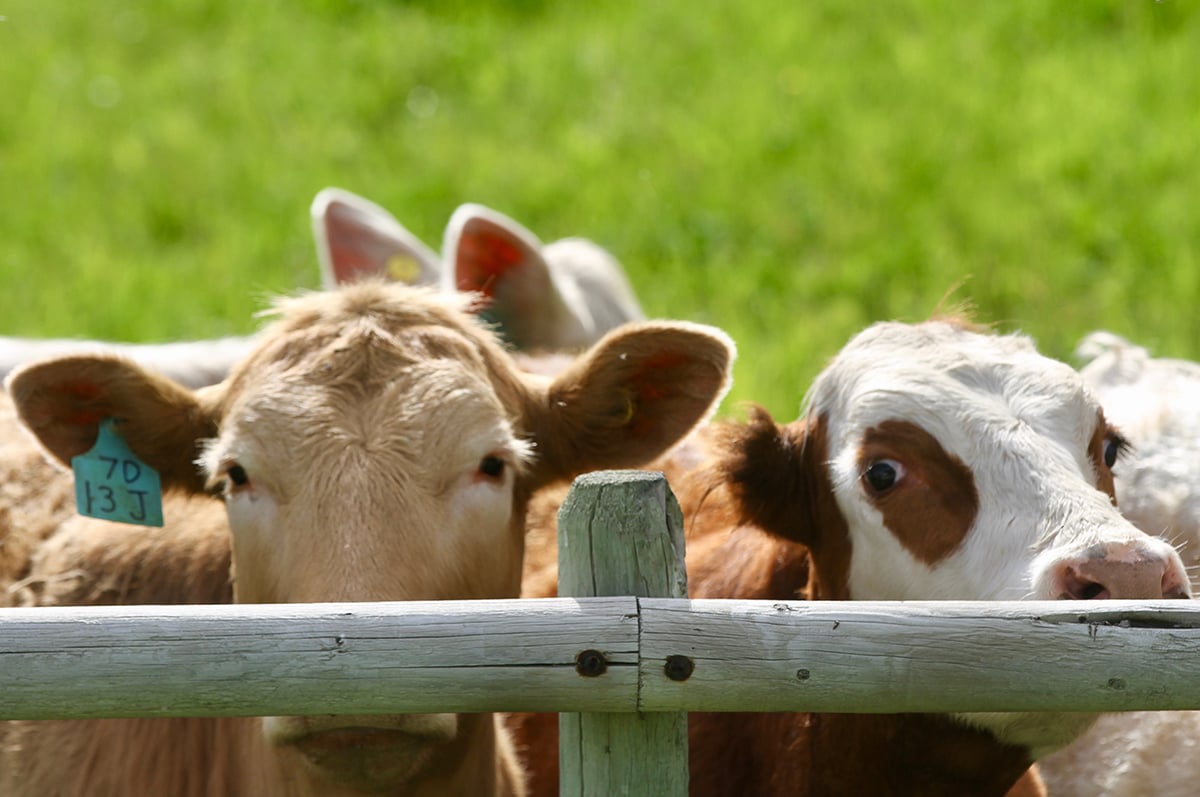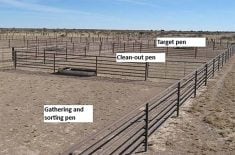MOOSE JAW, Sask. – Producers can protect lambs and calves from predators and ease grazing pressure by encouraging sheep and cattle to bond, says an American researcher.
Dean Anderson, an animal scientist at the Jornada Experimental Range in the Chihuahua Desert near Las Cruces, New Mexico, said cattle and sheep typically don’t mix well together in a free-range situation.
Creating a flerd from a flock and a herd requires pen socialization followed by field socialization.
He said it’s best to confine the animals where there is little traffic and distraction. A bond can sometimes develop within a week.
Read Also

Feeder market consolidates at historic highs
For the week ending Sept. 6, Western Canadian feeder cattle markets were relatively unchanged compared to seven days earlier.
Bonding doesn’t mean the sheep and cattle will always remain next to each other, Anderson said, but it does mean they will stay within sight.
The sheep will graze certain plants that the cattle won’t, leading to more uniform pasture use.
The two species co-exist well once bonded. Research has shown that wethers (castrated males) bond more tightly to cattle than ewes, and Anderson advised keeping that in mind when starting the process.
“Cattle simply tolerate the presence of sheep,” Anderson said.
“It’s basically a unidirectional bond.”
He said researchers as early as 1967 were noticing less predation loss when the two species grazed together.
Using a dog trained to simulate a threat, he found that non-bonded sheep bunched and ran separately from the cattle while bonded sheep crowded into the cattle herd to seek protection.
Anderson has taken this a step further with the development of a computerized collar that whispers cues into the cow’s ears and directs the entire flerd.
He said directional virtual fencing, as it’s known, eliminates fencing costs and reduces stress.
The system is delivered via satellite. A GPS in the rancher’s home computer sends the commands and receives information on the locations of individual animals.
The cues – gee to go right and haw to go left – are programmed into the collar and sent automatically. The system hits cows that ignore the cues with a mild electrical shock.
The commands can steer animals to a predetermined grazing area rather than letting them wander on their own. This can prevent overgrazing, reduce handling and save money on fencing and materials.
“You can control the sheep if you’re controlling the cows,” Anderson said.
He admitted that cows sometimes ignore the cues.
“If you can accept leaky boundaries, virtual fencing can be appropriate.”
Anderson said virtual fencing has had a slow start because past systems required an underground wire, similar to the fenceless systems used to train dogs.
“When satellite technology became available, that gave us a real opening.”
His latest version of the collar weighs three kilograms but he foresees one the size of an ear tag.
Power is a challenge. Solar is possible, but Anderson also wonders whether the kinetic energy of the cow could transfer power to the batteries. He predicted that by mid-century cattle won’t require a collar; technology will exist to stimulate nerve synapses.















